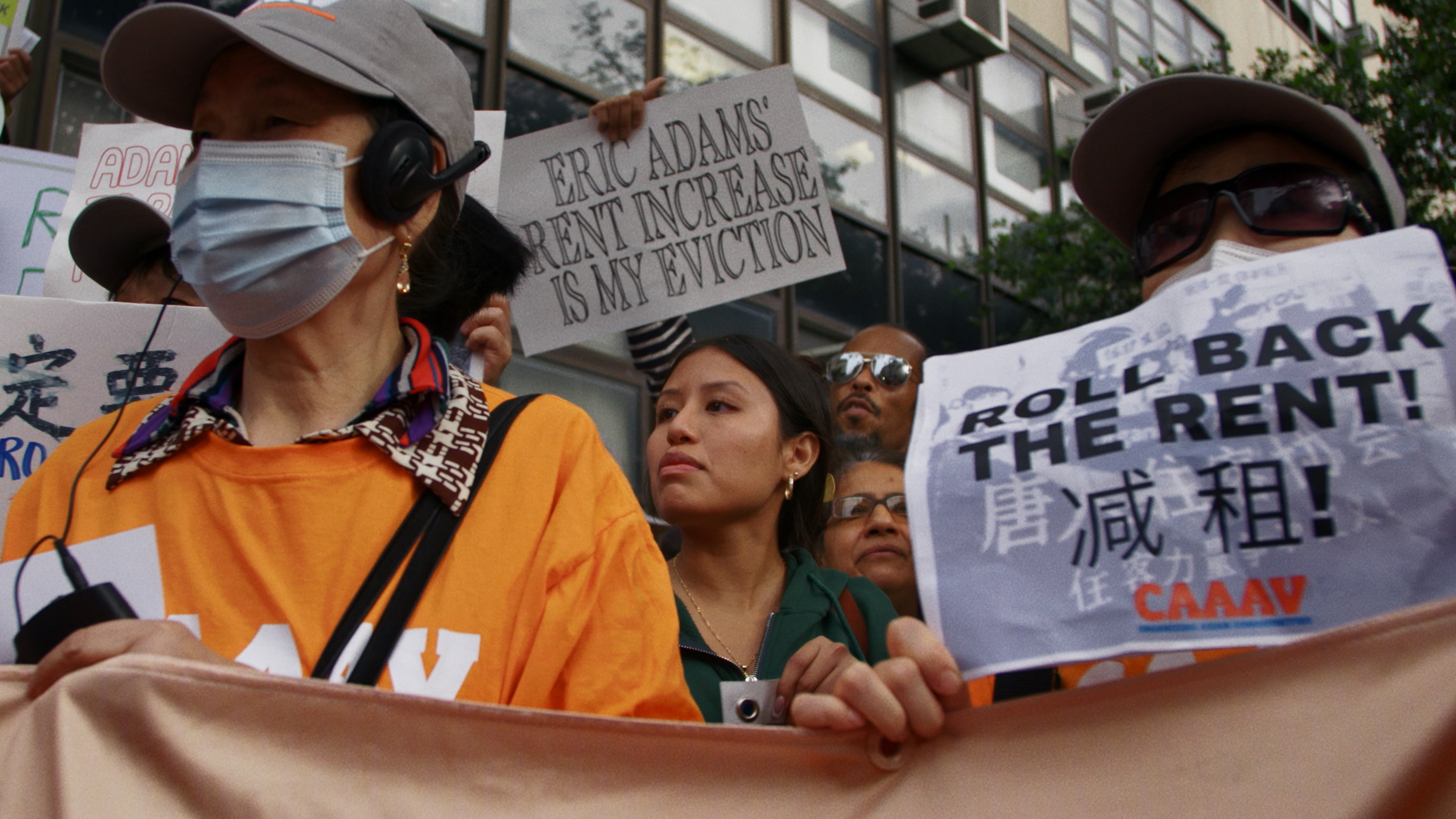What Happens When a City Loses Its Voice? Slumlord Millionaire and The Sounds of New York

By: Ellie Powers
You may have heard the Fran Lebowitz line: “No one can afford to live in New York. Yet, eight million people do.” It’s a paradox that has defined the city for generations. Today, you can hear over 200 languages spoken throughout the five boroughs, with nearly 40% of New Yorkers born outside the United States. Despite the relentless cost of living, they stay.
But the question of how they stay has become increasingly urgent. The median rent in Manhattan has climbed to nearly $5,000 a month, making housing the defining issue for many who call New York home. It’s a crisis that filmmakers Steph Ching and Ellen Martinez confront head-on in their documentary, Slumlord Millionaire. The film examines this crisis through the voices of the vibrant, tight-knit communities fighting to keep it alive.
From the start, Steph and Ellen knew New York City was a character in their story. They felt it paramount to give it (and its inhabitants) the right voice.


"From the beginning, we really wanted New York City itself to be a character in the film," says Steph. "It does start with just city audio, traffic, voices over black, and then we are dropped into the neighborhood of Sunset Park, Brooklyn."
The opening sequence sets the tone: a beautifully crafted soundscape that captures the heartbeat of New York before a single image hits the screen. Honking horns, snippets of conversation in multiple languages, music spilling from storefronts, the distant rumble of the subway. It’s a portrait of what’s truly at stake as gentrification and displacement reshape the city.
"We did want to be so specific about the neighborhoods and the soundscape because that really is what is at risk of being lost," Ellen adds. "Having the languages and the music, everything that makes each neighborhood unique, is something that we could potentially lose."
To capture that authenticity, the filmmakers turned to Harbor supervising sound editor and re-recording mixer Kevin Peters. Kevin was tasked with polishing and streamlining crowded audio tracks and became a partner in world-building. He and the directors ventured into the neighborhoods featured in the film, recording the real sounds of daily life to showcase the textures of these communities.
As Kevin explains, "We set out to create a soundtrack that captured the true textures of New York City. Since the film moves through several distinct neighborhoods, I prioritized recording location-specific ambiences that reflected each environment. Our sound effects editor, Ryan Billia, and I also have years of NYC recordings—everything from casual sidewalk conversations to the sounds of subway lines, sirens, construction, engines, protests, and everyday street life. All of these real-world recordings were carefully integrated throughout the film alongside the production tracks, which captured a lot of the wonderful sync audio. If you’ve ever lived in New York, you know it can be a raw and chaotic soundscape, and we wanted the audience to feel immersed in that energy and genuinely present in each setting."
That immersion wasn’t without its challenges. Much of Slumlord Millionaire follows tenant activists at rallies and protests, and the vérité nature of those shoots often meant Steph and Ellen were working with tiny crews (sometimes just the two of them). They’d mic up a subject, hoping they’d be a speaker at the rally or join in the chants. Sometimes it worked; other times, it didn’t.
"Kevin really helped us pull out the key parts of what was recorded," Steph explains, "and blend that with other recordings from the same neighborhoods or spaces he would field record separately."
Kevin and team also tackled editing and preserving dialogue across multiple languages while maintaining the integrity of the filmmakers’ vérité approach. “Working on a film that contains multiple languages can be challenging,” Kevin says. “The dialogue editor, Ben Soiefer, did a great job carefully preserving the edit as the filmmakers intended, while also doing a tremendous job cleaning up the tracks.”
The result is a film where the soundscape carries a lot of weight, simultaneously acting as a memory, presence, loss, and defiance. The sounds of the city remind audiences what’s truly at risk when working-class communities are pushed out: a living, breathing, noisy city.








"We want New York to continue to be a place for everybody," Steph says. "If it’s just for people who can afford luxury housing, you lose that character. There’s no culture; there’s no music."
When you think of New York, you might think of honking cabs, screeching subways, and street performers. Those sounds only represent part of what makes this city so special.
The sounds of communities—block parties and barbecues, impromptu concerts, people chatting on stoops, kids squealing—are really what’s at risk with the rising cost of housing. In Slumlord Millionaire, sound plays a crucial role in reminding all of us that the heart of New York beats loudest in the places most at risk of being silenced.
Slumlord Millionaire is available to stream via PBS, Prime Video, Apple TV, and Xfinity.

